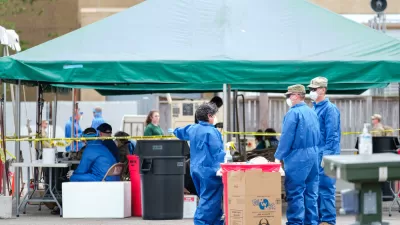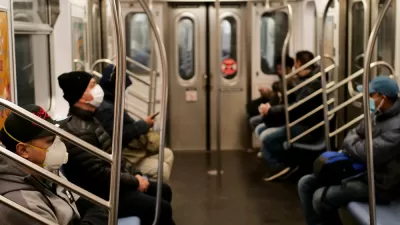For the first time in the pandemic, over 4,000 Americans died on one day, January 7, from a disease that had no name before Feb. 11, 2020.

The day after an angry mob of President Donald Trump's most ardent supporters stormed the Capitol on Jan. 6 while Congress was counting the Electoral College votes to validate the election of former Vice President Joe Biden and Sen. Kamala Harris, resulting in the deaths of five people, including a Capitol Police officer, another tragedy was unfolding in thousands of hospitals across America.
Thursday was the first day that American deaths caused by a respiratory disease named COVID-19 by the World Health Organization on Feb. 11, 2020, exceeded four thousand. The exact number of fatalities was 4,194, according to the Johns Hopkins Coronavirus Resource Center.
Friday was the second deadliest for the virus in the U.S., responsible for 3,895 deaths, causing the 7-day average to exceed 3,000 for the first time, according to The New York Times coronavirus tracker
Since the first recorded death on Feb. 29, 2020, in King County, Washington, there have been over 372,000 deaths from COVID-19, according to Johns Hopkins. The growing U.S. death toll accounts for over 19 percent of the 1.92 million global deaths even though the U.S. has only 4.25 percent of the world's population.
[The correspondent recommends "How the Pandemic Defeated America: A virus has brought the world’s most powerful country to its knees" by Ed Yong for The Atlantic (August 2020).]
Projections for January
The ensemble forecast by the Center for Disease Control and Prevention (CDC) predicts a range of 35,000 to 68,000 additional deaths due to Covid by Jan. 30, bringing the total to 405,000 to 438,000.
The current projection from the Institute for Health Metrics and Evaluation (IHME) at the University of Washington, the model cited most often by the White House Coronavirus Task Force, is for 453,000 deaths, although it provides a range based on three factors:
- Universal masking would lower the projection by 12,000 deaths
- Easing coronavirus restrictions would add 23,000 deaths
- For all the talk about vaccines, a "rapid vaccine rollout" would lower deaths by less than 500
The source article below by Brittany Shammas and Ben Guarino highlights the latest CDC research showing that almost 60 percent of coronavirus transmission comes from people who are asymptomatic, i.e., not showing symptoms of the disease, "demonstrat[ing] the importance of following the agency’s guidelines about wearing a mask and maintaining social distance."
Related in Planetizen:
-
Looking Ahead and Way Back as the U.S. Passes 200,000 Coronavirus Deaths, September 28, 2020
-
A Grim Coronavirus Milestone: 150,000 American Deaths, July 31, 2020
FULL STORY: U.S. sets covid-19 death record as researchers point to asymptomatic cases as a major source of infections

Study: Maui’s Plan to Convert Vacation Rentals to Long-Term Housing Could Cause Nearly $1 Billion Economic Loss
The plan would reduce visitor accommodation by 25,% resulting in 1,900 jobs lost.

Alabama: Trump Terminates Settlements for Black Communities Harmed By Raw Sewage
Trump deemed the landmark civil rights agreement “illegal DEI and environmental justice policy.”

Why Should We Subsidize Public Transportation?
Many public transit agencies face financial stress due to rising costs, declining fare revenue, and declining subsidies. Transit advocates must provide a strong business case for increasing public transit funding.

Paris Bike Boom Leads to Steep Drop in Air Pollution
The French city’s air quality has improved dramatically in the past 20 years, coinciding with a growth in cycling.

Why Housing Costs More to Build in California Than in Texas
Hard costs like labor and materials combined with ‘soft’ costs such as permitting make building in the San Francisco Bay Area almost three times as costly as in Texas cities.

San Diego County Sees a Rise in Urban Coyotes
San Diego County experiences a rise in urban coyotes, as sightings become prevalent throughout its urban neighbourhoods and surrounding areas.
Urban Design for Planners 1: Software Tools
This six-course series explores essential urban design concepts using open source software and equips planners with the tools they need to participate fully in the urban design process.
Planning for Universal Design
Learn the tools for implementing Universal Design in planning regulations.
Smith Gee Studio
Alamo Area Metropolitan Planning Organization
City of Santa Clarita
Institute for Housing and Urban Development Studies (IHS)
City of Grandview
Harvard GSD Executive Education
Toledo-Lucas County Plan Commissions
Salt Lake City
NYU Wagner Graduate School of Public Service





























